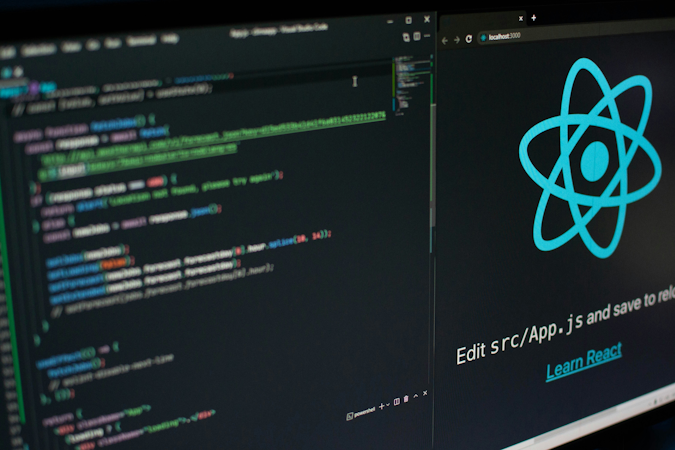
Tony Spiro
October 02, 2025

When Anthropic released Claude Sonnet 4.5, we were eager to put it through its paces. Today, I want to share what we discovered by building the exact same blog application with both Sonnet 4 and 4.5 using a simple one-shot prompt.
The Experiment: One Prompt, Two Models
To truly understand the differences between these models, we ran a controlled experiment. We gave both Claude Sonnet 4 and 4.5 the same straightforward prompt: "Build me a modern blog application."
Both applications were built entirely through natural language using the Cosmic AI Platform - no manual coding required. Here are the results:
Key Differences We Observed
1. Architecture and Code Quality
The most striking difference was in how each model approached the application architecture:
Sonnet 4 delivered a solid, functional blog with clean component structure. The code was well-organized and production-ready, showcasing the model's strong coding capabilities.
Sonnet 4.5 took it further with noticeably more sophisticated architectural decisions. The component hierarchy was more refined, with better separation of concerns and more elegant state management. As Anthropic noted in their release, Sonnet 4.5 achieves state-of-the-art performance on SWE-bench Verified with 77.2% accuracy - and we saw this manifest in more maintainable code structure.
2. User Experience and Design
Both models created modern, responsive designs, but with different approaches:
Sonnet 4 produced a clean, straightforward blog layout with good typography and spacing. The design was professional and functional.
Sonnet 4.5 demonstrated more nuanced design decisions - better use of whitespace, more refined typography hierarchy, and smoother transitions. The overall polish was noticeably higher, reflecting the model's improved attention to detail.
3. Feature Completeness
This is where Sonnet 4.5's "substantial gains in reasoning" really showed:
Sonnet 4 implemented the core blog features you'd expect: post listings, individual post pages, categories, and basic navigation.
Sonnet 4.5 anticipated additional features that weren't explicitly requested but make sense for a modern blog: improved category filtering, better metadata structure, and more sophisticated content relationships. The model's enhanced reasoning allowed it to infer what a "modern blog" should include beyond the basics.
4. Development Speed and Coherence
Anthropric mentioned that Sonnet 4.5 maintains "focus for more than 30 hours on complex, multi-step tasks." While our blog build was much shorter, we noticed:
Sonnet 4 completed the build efficiently with minimal back-and-forth, staying focused on the core requirements.
Sonnet 4.5 not only completed the build 1.5-2x faster but also demonstrated better contextual awareness throughout the process. When making decisions about file structure or component organization, it maintained stronger coherence across the entire codebase.
What This Means for Development Teams
Having tested both models extensively through the Cosmic AI Platform, here's what I recommend:
When to Use Sonnet 4
- Building straightforward applications with well-defined requirements
- Projects where proven, stable performance is the priority
- Situations where the latest features aren't critical
- Budget-conscious projects (same pricing for both, but Sonnet 4 is established)
When to Use Sonnet 4.5
- Complex applications requiring sophisticated architectural decisions
- Projects where cutting-edge AI capabilities provide competitive advantage
- Long-running, multi-step development tasks
- Applications where polish and user experience details matter significantly
- Time-sensitive projects requiring faster response times
The Cosmic AI Platform Advantage
What made this comparison particularly valuable was using the Cosmic AI Platform for both builds. Our platform allowed us to:
- Generate complete applications from natural language prompts
- Deploy instantly to see real-world results
- Manage content through the same intuitive interface
- Compare side-by-side without infrastructure overhead
Both models produced production-ready applications in minutes - something that would have taken hours or days with traditional development. The Cosmic AI Platform's integration with GitHub and Vercel meant both blogs were deployed and live almost immediately.
Real-World Performance
Visit both applications yourself:
You'll notice that both are fast, responsive, and fully functional. The differences are subtle but meaningful - particularly in code organization, feature completeness, and overall polish.
Conclusion: Evolution, Not Revolution
Claude Sonnet 4.5 represents a meaningful evolution in AI-assisted development. It's not a revolutionary leap that makes Sonnet 4 obsolete, but rather a refinement that produces noticeably better results across multiple dimensions:
- Better architecture for long-term maintainability
- More sophisticated reasoning about user needs
- Higher polish in the final product
- Improved coherence across complex tasks
- Faster response times delivering results 1.5-2x quicker
For teams using the Cosmic AI Platform, Sonnet 4.5 delivers on its promise of being "the best coding model in the world." But Sonnet 4 remains an excellent choice for many use cases.
The beauty of our platform is that you can easily try both models and see which works best for your specific needs. Both will generate complete, deployable applications from simple natural language prompts - just with different levels of sophistication in the final result.
Try It Yourself
Interested in building your own AI-powered applications? Check out the Cosmic AI Platform, sign up for a free Cosmic account, and see what you can create with Claude Sonnet 4.5. Or explore our Community projects to see what others are building.
The future of development isn't choosing between human creativity and AI capability - it's using tools like the Cosmic AI Platform to amplify both.
Tony Spiro is the CEO of Cosmic, creators of the Cosmic AI Platform for building and deploying applications using natural language. Image source: Anthropic Claude Sonnet 4.5 announcement.



